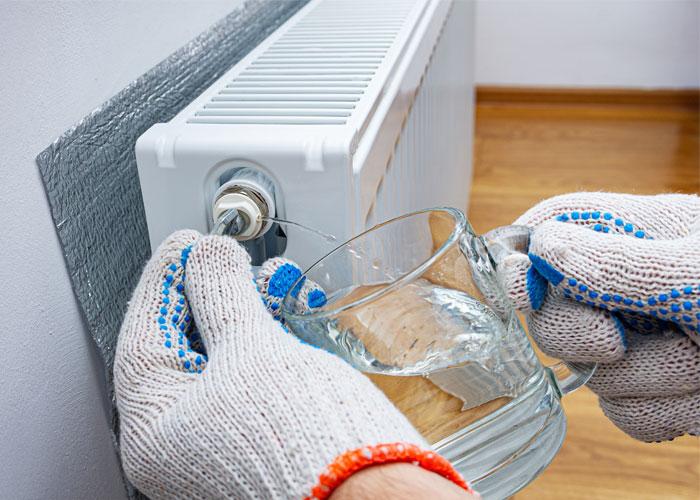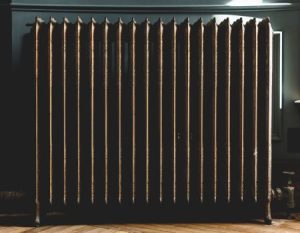If you find that your radiators aren't heating up as quickly or effectively as they used to, or if you notice cold spots on your radiators, then it may be time to bleed your radiators. Bleeding your radiators can improve their efficiency, allowing your heating system to work more effectively and helping to keep your space warm and comfortable.
When Should You Bleed A Radiator?
Bleeding your radiators should be part of your regular home maintenance routine. It is especially important to bleed your radiators if you notice that your heating system isn't working as well as it should be, or if you notice cold spots on your radiators. This can be a sign that there is air trapped in the system, preventing hot water from flowing freely and reducing the effectiveness of your heating system.
We recommend checking your radiators every autumn, before it gets very cold, to make sure that they’re working properly and ready for winter.
How To Bleed A Radiator
Bleeding a radiator is a simple process that you can do yourself. Before you get started, you’ll need a radiator key or a flathead screwdriver, as well as a cup or a cloth to catch any drips with. Follow the steps below to bleed your radiators and keep your space warm all year round.
Turn Off Your Heating System
Before you start bleeding your radiators, turn off your heating system and allow your radiators to cool down. This will help to prevent any hot water from spilling out when you start to bleed your radiators, which can be dangerous and cause scalds and burns.
Locate The Bleed Valve
The bleed valve is typically located at the top of your radiator, near one end. It will look like a small square or hexagonal nut.
Open The Bleed Valve
Insert your radiator key or flathead screwdriver into the bleed valve and turn it anti-clockwise. You should hear a hissing sound as the air starts to escape. Keep turning the valve until you see the water start to come out. Be sure to have a towel or a cup ready to catch any water that may spill out.
Close The Bleed Valve
Once the water starts to come out of the bleed valve, use your radiator key or flathead screwdriver to turn the valve back clockwise. Be sure not to overtighten the valve.
Check The Pressure
After bleeding your radiator, you may notice that the pressure in your heating system has dropped. Check the pressure gauge on your boiler and top up the pressure if necessary by following the instructions in your boiler manual.
Turn Your Heating System Back On
Once you've finished bleeding your radiators, turn your heating system back on and check to make sure that your radiators are heating up evenly.
What To Do If Your Radiators Still Aren't Heating Up
If there are still cold spots in your radiators, you may have to call a heating engineer to assess the problem further or try...
Check Your Thermostatic Radiator Valve
If your radiators aren’t heating up, this could be due to a faulty TRV. Check to see if your TRV is set to the correct temperature and try adjusting it to test whether it is working.
System Balancing
If some radiators are heating up more than others, it may be due to an imbalance in your heating system. This can happen if some radiators are further away from the boiler than others. To fix this, a professional can adjust the flow of water to each radiator by adjusting the lockshield valve.
Flushing Out An Airlock
If your radiators still aren't heating up, it could be due to an airlock in your heating system. This can happen if air becomes trapped in the pipes, preventing hot water from flowing freely. To fix this, you can try flushing out the airlock by opening the bleed valve on the affected radiator and allowing water to flow through until all the air has been expelled.
Get In Touch
At the Radiator Warehouse, we are your local experts in radiators and central heating. Contact us today to find out more about choosing, installing, and maintaining radiators to keep your home warm month after month.




